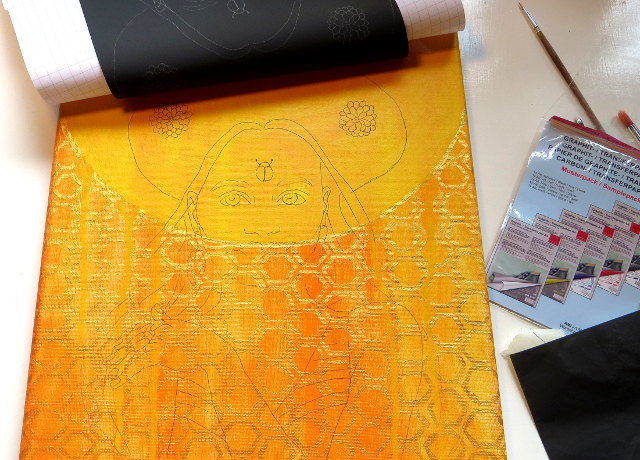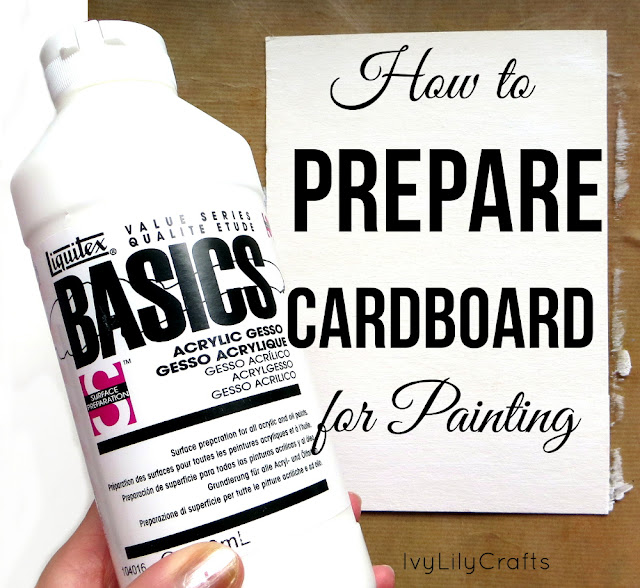How to Transfer Sketch onto Painting Surface
As I've mentioned before, I don't usually draw my sketches for paintings straight onto watercolor paper or canvas. I draw the sketch on a separate paper, where it's easier to erase and clean up the outlines and then transfer the finished sketch onto my painting surface. In this blog post I'll list five different methods to transfer your drawing onto the painting surface. They're all either cheap or completely free. Some require a computer or other technology and some don't. So hopefully, if you're struggling with how to transfer your sketches, one of these methods (or a combination of some of them) will suite your budget and the supplies you already have available.
Lyhyesti suomeksi alla.
Baking paper
The first option is one you might remember from your childhood. At least, I do. It was part of how I learned to draw. I would trace comic book characters onto baking paper and transfer them into my drawings. For the baking paper method (or butter paper or wax paper), you need to use a soft pencil (like a B pencil or higher, 2B etc.). Place the baking paper on top of your sketch and trace the drawing. Then flip the baking paper upside down on your painting surface and redraw the sketch. The drawing will transfer onto your paper or canvas etc. as a mirror image. You can use the same baking paper to transfer the same sketch again and again, if you want several copies of a flower, for example. Every other one will be a mirror image and every other one the original image.
The pros of this method are that it's free (assuming you already have baking paper), you don't need any other equipment and you can transfer your sketch to any type of painting surface. The cons are that the transferred drawing is not very accurate since you used a soft pencil and baking paper can be really tricky to attach to the surface to keep it still while drawing.
 |
| Indian portrait as a marker drawing, a sketch and traced on baking paper. |
Window
Next method is using a window or a glass door and a lamp behind it. This works like a light table, but in vertical position. Place your sketch on the window and your (watercolor) paper on top of it. The lines will show through the paper and you can trace them. Advantages are again that this is free and you don't need any special equipment. Disadvantages, however, are that you can't transfer your sketch onto any thick material like a board or canvas. This is also a pretty uncomfortable method especially if you have an intricate drawing and the result won't be very exact.
 |
| Sketch of a woman in hijab traced onto paper against a window. |
Graphite transfer paper
Next up is my current favorite method. I have used both baking paper and the window method for years, but tried out graphite transfer paper* last summer after seeing it in Leilani Joy's videos and loved it. She makes her sketch in a small size, scans it and blows it up, prints the enlarged version and transfers that onto her painting surface with graphite transfer paper. This whole method might help you if you really like the first sketch you made, but it's in a smaller size than you want your painting to be.
However, you don't need a computer or any other technology for using transfer paper. You just place the graphite transfer paper (black or colored side down) between your painting surface and the sketch and redraw the sketch. Preferably with a different kind of pen so you'll see which parts you already transferred. Attach the sketch onto the painting surface with painter's tape so it won't move while you draw. The graphite paper, however, can move. I also made a video on how to use graphite transfer paper.
 |
| Portrait sketch transferred onto canvas with graphite transfer paper. |
This is a more exact and comfortable method than the previous two and you can transfer your sketch onto pretty much any kind of surface. I haven't had any issues with smudging either, but that might depend on the type of graphite transfer paper you use. You can use the same piece of transfer paper multiple times, just don't draw the same lines on the exact same place again. The con of graphite transfer paper is that you'll need to buy it. But it's not very expensive and as I said, you can use the same piece of transfer paper again and again. I bought my graphite transfer paper from Tempera in Finland. If you want to buy graphite paper online, Amazon sells Saral graphite transfer paper* in rolls. (*These are affiliate links, which means I may earn a small commission if you click the link and make a purchase.)
You might also like this: Art Supply Haul and Varnishing Acrylic Paintings
Computer screen
This transfer method involves a computer, a camera or a phone and a DIY graphite transfer paper. Happy D. Artist makes the sketch in her sketchbook, takes a photo of it, enlarges the photo on her computer, places a normal paper over the enlarged sketch on the computer screen and traces the sketch. So the computer screen acts as a kind of a light table. She then colors the other side of the paper with a graphite pencil (this is the DIY graphite transfer paper) so when she places the paper onto her painting surface and redraws the lines, the graphite from the back of the paper will transfer onto the painting surface. I haven't tried this one personally yet, but if you already have a computer and a camera, this is a free method for transferring your sketch.
DIY light table
So, a light table would be comfortable to use but they can be quite expensive. A window is free but uncomfortable to use. How about something in between? I got this tip from Daughter Zion Designs' blog post about her work supplies in a reply to my comment (which sadly is not available in her blog anymore). You can make your own light table by "using a large piece of plexiglass, sitting on two small sawhorse legs, or even between two chairs, with a lamp underneath. A large piece of glass (in a frame, for support) works too." Certainly a cheaper option than a light table.
Do you use any of these methods for transferring a sketch onto paper or canvas, or do you have more tips on how to do it?
En yleensä piirrä lyijykynäluonnosta suoraan maalauspohjalle, vaan teen luonnoksen erilliselle paperille (ruutupaperi tai tulostuspaperi käy hyvin), jossa piirrosta on helppo kumittaa ja korjailla. Vasta sen jälkeen siirrän valmiin luonnoksen vesiväripaperille tai kankaalle. Keräsin tähän postaukseen viisi ilmaista tai halpaa tapaa, joilla luonnoksen voi siirtää maalauspohjalle joko ilman tietokonetta ja muuta teknologiaa tai niiden avulla.
- Piirroksen voi jäljentää leivinpaperille pehmeällä lyijykynällä. Kun käännät leivinpaperin toisin päin maalauspohjan päälle ja piirrät luonnoksen uudelleen, piirros siirtyy maalauspohjalle.
- Voit jäljentää piirroksen paksummalle paperille myös ikkunaa vasten käyttäen aurinkoa valonlähteenä, jolloin piirros näkyy paperin läpi.
- Näitä menetelmiä tarkempi on grafiittipaperi, joka asetetaan maalauspohjan ja luonnonksen väliin. Kun piirrät luonnoksen päälle, viivat siirtyvät grafiittipaperista maalauspohjaan. Ostin oman grafiittipaperini Temperasta.
- Varsinkin jos haluat suurentaa luonnoksen kokoa, voit skannata sen tai ottaa siitä kuvan, siirtää sen siirtää sen tietokoneelle, suurentaa haluamaasi kokoon, asettaa kopiopaperin ruudun päälle ja jäljentää piirroksen ruudulta (tai tulostaa sen haluamassasi koossa). Jos teet luonnoksen heti oikeassa koossa, skippaa edellinen vaihe ja tee luonnos suoraan kopiopaperille. Seuraavaksi väritä käyttämäsi kopiopaperin toinen puoli kokonaan pehmeällä lyijykynällä. Kun asetat luonnoksen maalauspohjan päälle ja piirrät kuvan uudestaan, piirros siirtyy maalauspohjalle.
- Viimeinen vaihtoehto on tehdä oma "valopöytä" asettamalla iso pleksilasi tai lasi kehyksissä kahden sahapukin tai tuolin väliin ja lamppu lamppu lasin alle.







Comments
Post a Comment